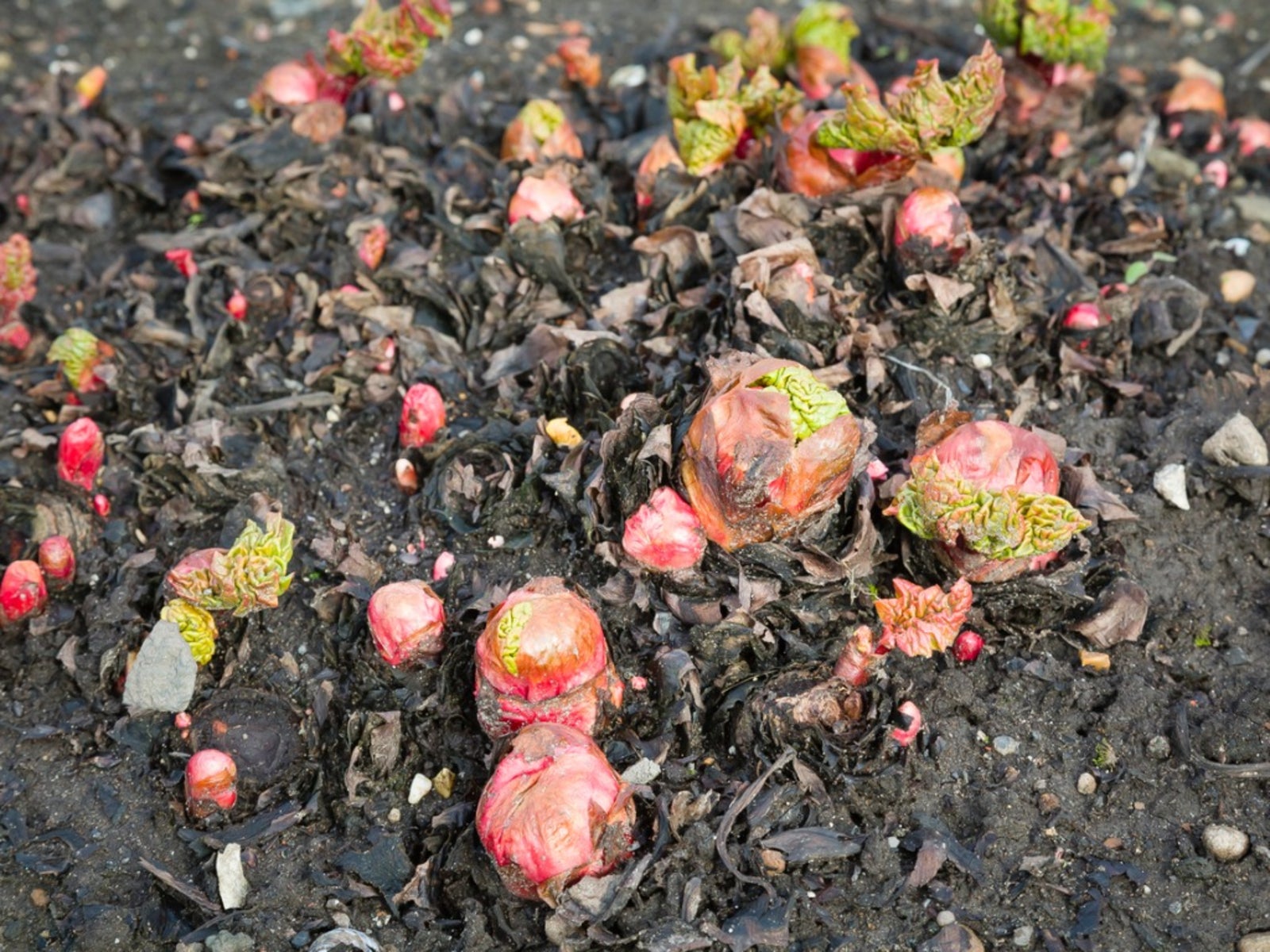Over Wintering Rhubarb: Tips For Protecting Rhubarb In Winter


The bright colorful stalks of rhubarb make an excellent pie, compote, or jam. This perennial has huge leaves and a tangle of rhizomes that persist year after year. The crown requires cool temperatures to “rest” before the plant regenerates in spring and produces the tangy stems. Your growing zone will dictate the type of rhubarb winter care necessary to keep the plant producing annually.
Rhubarb Growing Conditions
Rhubarb does well in most zones of the United States, with the exception of areas where the winter average is not above 40 degrees F. (4 C.). In these areas, the plant is an annual and produces sporadically. In temperate climates, rhubarb grows like a weed in spring and continues to produce leaves all summer into fall. Over-wintering rhubarb in these zones simply requires a layer of mulch prior to the first freezes. Use 4 to 6 inches (10-15 cm.) of organic compost to enrich the soil for the next season and provide crown protection. Protecting rhubarb in winter with a layer of mulch preserves the crown from excessive cold, while allowing the necessary chill to force new spring growth.
Rhubarb Winter Care in the Warm Zones
Rhubarb plants in warmer regions will not experience the cold temperature necessary for the crown to produce spring stems. Florida and other tropical to semi-tropical zones must plant crowns that have winterized in northern climates annually. Overwintering rhubarb in these zones will require removing the crowns from the ground and providing a chilling period. They literally need to be frozen for at least six weeks and then gradually let the temperature increase before planting. Using this method to winter over rhubarb is cumbersome and fills up your freezer. Warm season gardeners would do better to purchase new crowns or start rhubarb from seed.
How to Winter Over Rhubarb Crowns
As long as the soil is well drained, the crowns will survive even hard freezes with a layer of mulch. Rhubarb plants require a cold period to grow. This means that you can fool a plant into producing stems even out of season. Dig up the crowns in late fall and put them in a pot. Let them stay outside during at least two freeze periods. Then move the crowns inside where the crown will warm up. Put the pots in a dark area and cover the crowns with peat or sawdust. Keep them moist and harvest the stems when they are 12 to 18 inches (31-45 cm.) high. The forced stems will produce for about one month.
Dividing Rhubarb
Protecting rhubarb in winter will ensure healthy crowns that will produce a lifetime. Divide the crowns every four to five years. Pull away the mulch in early spring and dig up the roots. Cut the crown into at least four pieces, making sure each one has several “eyes” or growth nodes. Replant the pieces and watch them produce new healthy plants. If your zone indicates, either dig up the plant and freeze the crown or cover it with a new layer of organic material. Alternately, plant seeds in flats in September and transplant seedlings outdoors in late October.
Gardening tips, videos, info and more delivered right to your inbox!
Sign up for the Gardening Know How newsletter today and receive a free copy of our e-book "How to Grow Delicious Tomatoes".

Bonnie Grant is a professional landscaper with a Certification in Urban Gardening. She has been gardening and writing for 15 years. A former professional chef, she has a passion for edible landscaping.
-
 Looking For Plants To Give You The Soft And Fuzzies? Try These 5 Fuzzy Leaf Plant Options
Looking For Plants To Give You The Soft And Fuzzies? Try These 5 Fuzzy Leaf Plant OptionsLovers of texture, drama, silver foliage and tactile plants will adore these special sensory garden additions. These fuzzy leaf plant options will leave you all aglow
By Susan Albert
-
 Get Ready For A Summer Of Hummers! Grow These Full Sun Hummingbird Plants and Flowers
Get Ready For A Summer Of Hummers! Grow These Full Sun Hummingbird Plants and FlowersIf you’re lucky enough to enjoy a sunny backyard, make sure you are maxing out on your pollinator opportunities and grow these full sun hummingbird plants and flowers
By Tonya Barnett